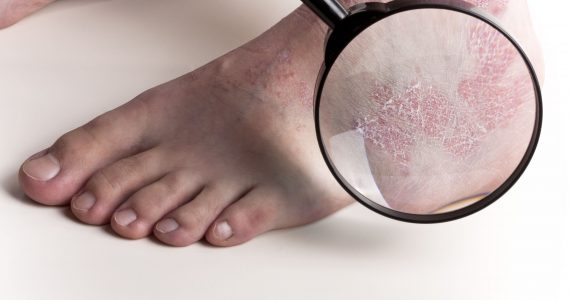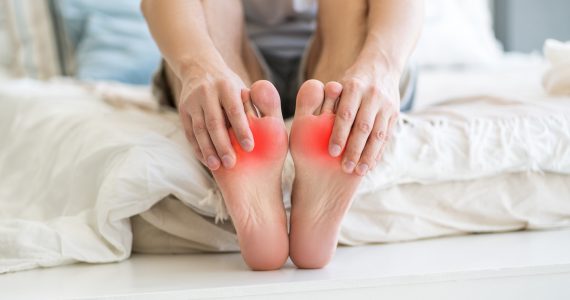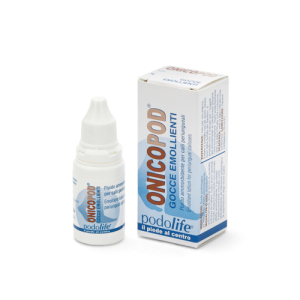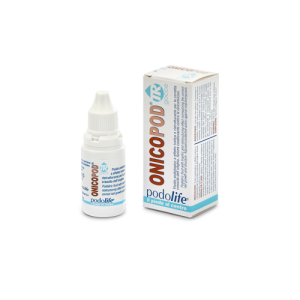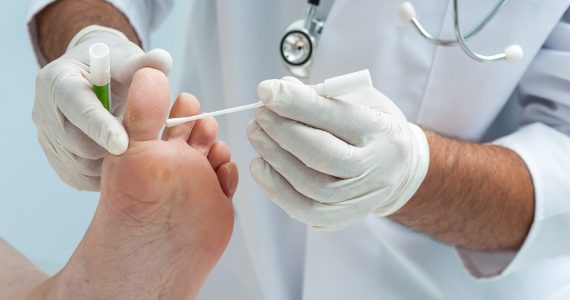
MYCOSES are infections caused by mycetes, more commonly known as fungi, that can colonise: skin, hair, nails (onychomycosis) and the genital areas, e.g. infection by Candida albicans. It is important to note that some mycetes can be found in normal microbial flora known as cutaneous microbiome.
Cutaneous flora is made up of the microorganisms that populate our skin. Among these we can distinguish a resident flora, which is a usual guest on the skin of many people, and a temporary flora, consisting of microorganisms that can establish themselves but that are only transitory.
Under normal conditions, the resident microbial flora is not pathogenic while, considering the enormous number of microorganisms with which it is in contact, the skin can temporarily host pathogenic or potentially pathogenic species as well.
Fungal infections have a typical appearance and are therefore easily diagnosed by a specialist during a dermatological examination. In some cases however, the infection can be difficult to diagnose to the naked eye and the Dermatologist may decide to take biological material from the affected area in order to carry out a microscopic examination of the mycetes or to place it on a Sabouraud plate if performing a culture test for Candida.
When mycoses affect the nails they are called Onychomycoses.
Types of pathogenic agents
DERMATOPHYTES
Dermatophytes (e.g.: trichophyton rubrum, epidermophyton floccosum, microsporum canis, etc) feed on keratin and cause on the skin typical rosette-shaped macules with well-defined edges that spread outwards from the centre (tinea).
Some of these pathogenic agents can be the cause of infection to the:
- Face (tinea faciei)
- Groin (tinea cruris)
- Scalp (tinea capitis)
- Hands (tinea manum)
- Trunk (tinea corporis)
- Nails (tinea unguium)
- Feet (tinea pedis or athlete’s foot)
YEASTS
Yeasts (e.g.: Candida albicans) populate in warm damp parts of the body (anal-genital region, mouth, under the breasts, armpits, areas between fingers and toes).
Malassetia furfur is a yeast that prefers seborrheic areas and in individuals with a predisposition for it can be the cause of dermatoses such as:
- pityriasis versicolor (common sea fungus)
- pityrosporum folliculitis
- seborrheic dermatitis
Many yeasts are normally already present on the skin and coexist for years quite harmlessly, without causing any problems, however in some cases, a temporary lowering of the immune defences and/or lengthy pharmacological courses, can trigger a pathology.
Candida albicans for example, can cause problems to:
- The female genitals (candidal vulvovaginitis)
- The male genitals (candidal balanoposthitis)
- The mouth (oral thrush)
- The corners of the mouth (angular cheilitis)
- The lips (candidal cheilitis)
- The nails (candidal onyxis and perionyxis).
In these cases, culture examination using a swab can identify the microorganism responsible.
MOULDS
Some moulds (e.g.: scopulariopsis brevicaulis) are potential causes of infection caused by fungi (mycoses). Once the strain has been identified by means of clinical and laboratory diagnosis, the infection can be treated satisfactorily.
In skin folds, some of the previously mentioned pathogenic agents can create mycoses starting with a simple rash.

